August 8, 2025
Understanding the Connection Between Early Nutrition and Autism Spectrum Disorder
Breastfeeding and autism spectrum disorder (ASD) are interconnected topics of significant scientific interest. Recent research underscores the potential protective effects of breastfeeding against ASD, while also highlighting the unique challenges faced by autistic mothers and children. This article explores the evidence supporting breastfeeding as a modifiable factor in reducing autism risk, considers the sensory and behavioral considerations specific to autistic infants and parents, and discusses practical strategies to support successful breastfeeding in neurodivergent populations.
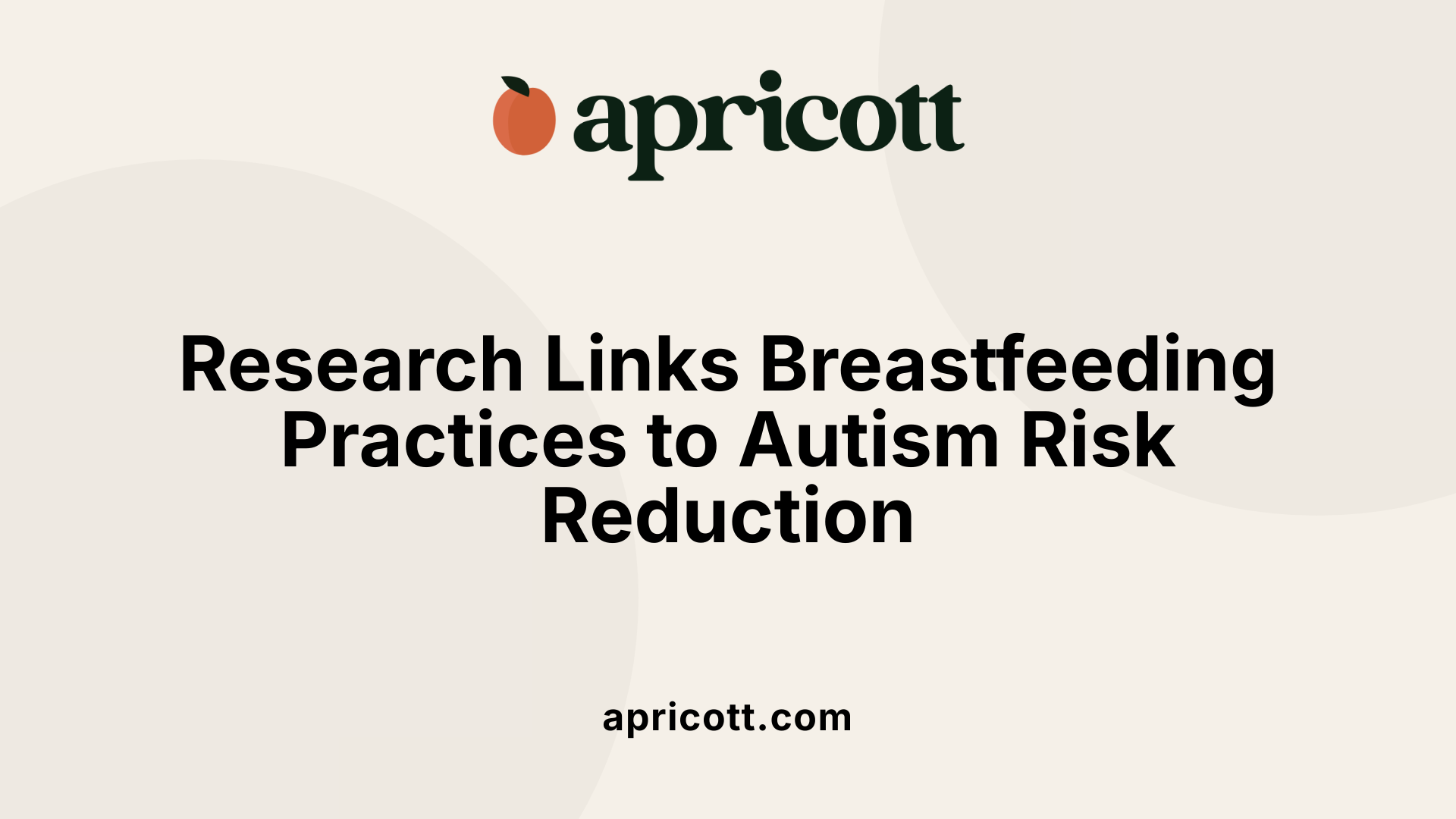
Research indicates that breastfeeding practices are linked to the risk of developing autism spectrum disorder (ASD). A comprehensive meta-analysis, incorporating seven high-quality observational studies with a total of 3,270 participants, found that children who were not breastfed had an increased risk of ASD, with an odds ratio of 1.81 (95% confidence interval, 1.35–2.27). Notably, the studies showed no heterogeneity (I^2=0%), suggesting consistent results across different populations. The analysis controlled for various confounding factors, strengthening the evidence that breastfeeding could offer a protective effect.
While the exact biological mechanisms remain under investigation, possible explanations include immune system modulation, microbiome development, and hormonal influences such as oxytocin release. These findings suggest that breastfeeding, especially when sustained over time, may help reduce the likelihood of ASD, highlighting the importance of breastfeeding support and promotion.
Although numerous studies observe a pattern where children with ASD tend to have shorter breastfeeding durations, establishing a direct, causal relationship remains challenging. Evidence suggests that longer breastfeeding durations, particularly beyond 12 months, correlate with fewer autistic traits and a reduced ASD diagnosis likelihood.
For instance, breastfeeding for more than 12 months was associated with a lower risk (adjusted odds ratio = 0.418), and breastfeeding into toddlerhood (12–24 months) may be particularly protective. Conversely, children diagnosed with ASD often experience shorter breastfeeding periods, averaging around 1.5 to 2 months less than their neurotypical peers.
However, factors like feeding difficulties associated with early ASD symptoms, maternal health, and socioeconomic status influence these patterns. While longer breastfeeding might contribute positively, current evidence does not definitively confirm causality, emphasizing the need for ongoing longitudinal and experimental research to clarify this relationship.
Studies indicate that maternal health during pregnancy significantly impacts the risk of autism in children. Conditions like diabetes, obesity, immune disturbances, and infections—such as fever—have been linked to a higher likelihood of ASD.
Environmental exposures during pregnancy, including air pollution, pesticides, and heavy metals, further contribute to increased autism risk. These factors could influence fetal neurodevelopment through mechanisms involving inflammation, immune response, or metabolic disturbances.
Importantly, prenatal vitamin intake, especially folic acid supplementation, may mitigate some of this risk, underscoring the importance of maternal nutrition. Overall, the health status and environmental exposures of the mother during pregnancy are crucial factors influencing the neurodevelopmental pathways associated with ASD.
Early signs related to breastfeeding and feeding behaviors can offer potential clues about autism risk. Infants who later develop ASD often show difficulties with latch, uncoordinated sucking, or sensory sensitivities that interfere with feeding. Mothers report challenges such as choking, gagging, or lack of typical hunger cues.
Behavioral signs like early feeding refusal, resistance to solids, and shorter breastfeeding duration are also observed more frequently in children who are later diagnosed with ASD. Sensory sensitivities, including tactile defensiveness or aversion to touch, can impact both breastfeeding behaviors and early social interactions.
Monitoring these early feeding patterns and behaviors could serve as part of a broader approach to earlier ASD identification, enabling timely intervention that can support developmental outcomes.
Autism influences breastfeeding in diverse ways due to sensory sensitivities, oral motor differences, and behavioral traits. Infants with ASD may experience dysregulated sucking, difficulty with latch, and sensory overload, which can hinder successful breastfeeding and result in shorter or more challenging breastfeeding journeys.
Autistic mothers often face challenges such as sensory overload, pain, and difficulty accessing tailored support. They may be overwhelmed by touch, noise, or environmental stimuli, complicating efforts to breastfeed. Additionally, communication differences can impede understanding or expressing support needs.
Children with ASD might use breastfeeding as a self-regulatory behavior, but sensory issues can lead to seeking or avoiding certain stimuli during feeding. These sensory and behavioral differences necessitate individualized support strategies, patience, and accommodations to foster positive breastfeeding experiences.
Providing effective support for autistic women involves creating an environment sensitive to sensory needs and communication styles. Strategies include designing quiet, calm, and sensory-friendly feeding spaces and offering visual aids or written instructions to supplement verbal guidance.
Healthcare professionals should ensure clear, direct communication, seek explicit consent before physical contact, and respect personal boundaries. Training staff to understand autism and sensory sensitivities is essential. Consistent support from a dedicated provider or peer supporter familiar with autism can improve confidence and comfort.
Using distraction techniques, such as toys or music, along with offering alternative feeding methods like nipple shields, can help manage sensory overload. Encouraging self-advocacy, respecting individual preferences, and tailoring support to unique needs promote successful breastfeeding experiences. These approaches foster a positive, empowering environment for autistic mothers and ensure they receive appropriate, respectful assistance.
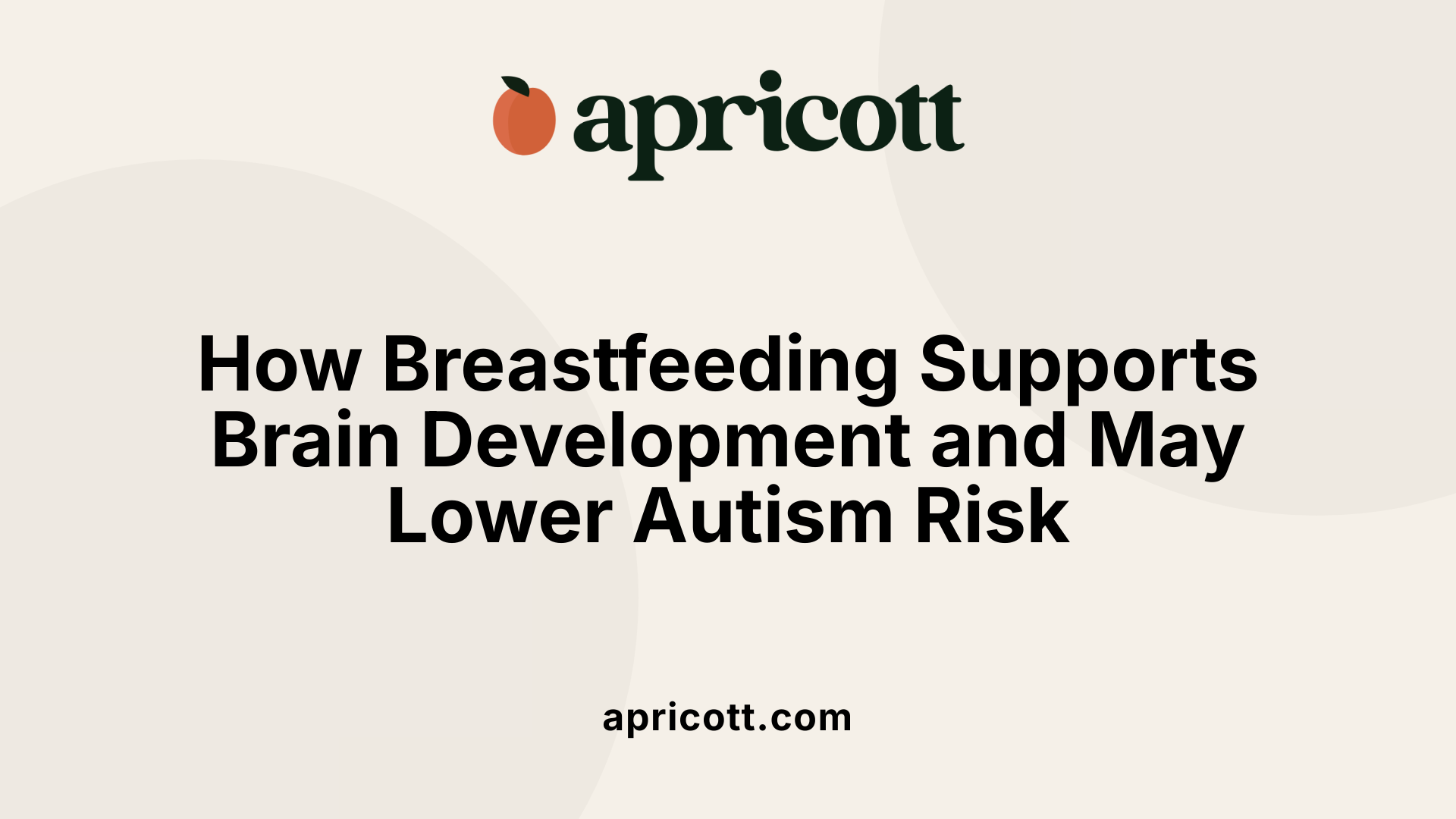
Research indicates that breastfeeding plays a protective role against ASD. A comprehensive meta-analysis of seven high-quality observational studies found that children who were never breastfed have an increased risk of developing ASD, with an odds ratio of 1.81. Conversely, exclusive breastfeeding can reduce this risk by approximately 76%. The duration of breastfeeding further influences outcomes; longer breastfeeding, especially between 12 to 24 months, correlates with a significant decrease in ASD risk. The protective effect appears to act in a dose-dependent way, meaning that the longer children are breastfed, the lower their risk.
Supporting this, a recent study highlighted that breastfeeding for at least 6 months results in a 54% reduction in ASD risk. Moreover, prolonging breastfeeding beyond the first year continues to be associated with lowered odds of ASD diagnosis. Importantly, early breastfeeding patterns, such as initiating and maintaining exclusive breastfeeding, could serve as early markers or preventive factors for ASD, especially in children born via cesarean delivery. Overall, breastfeeding offers neurodevelopmental benefits that contribute to lowering the likelihood of autism.
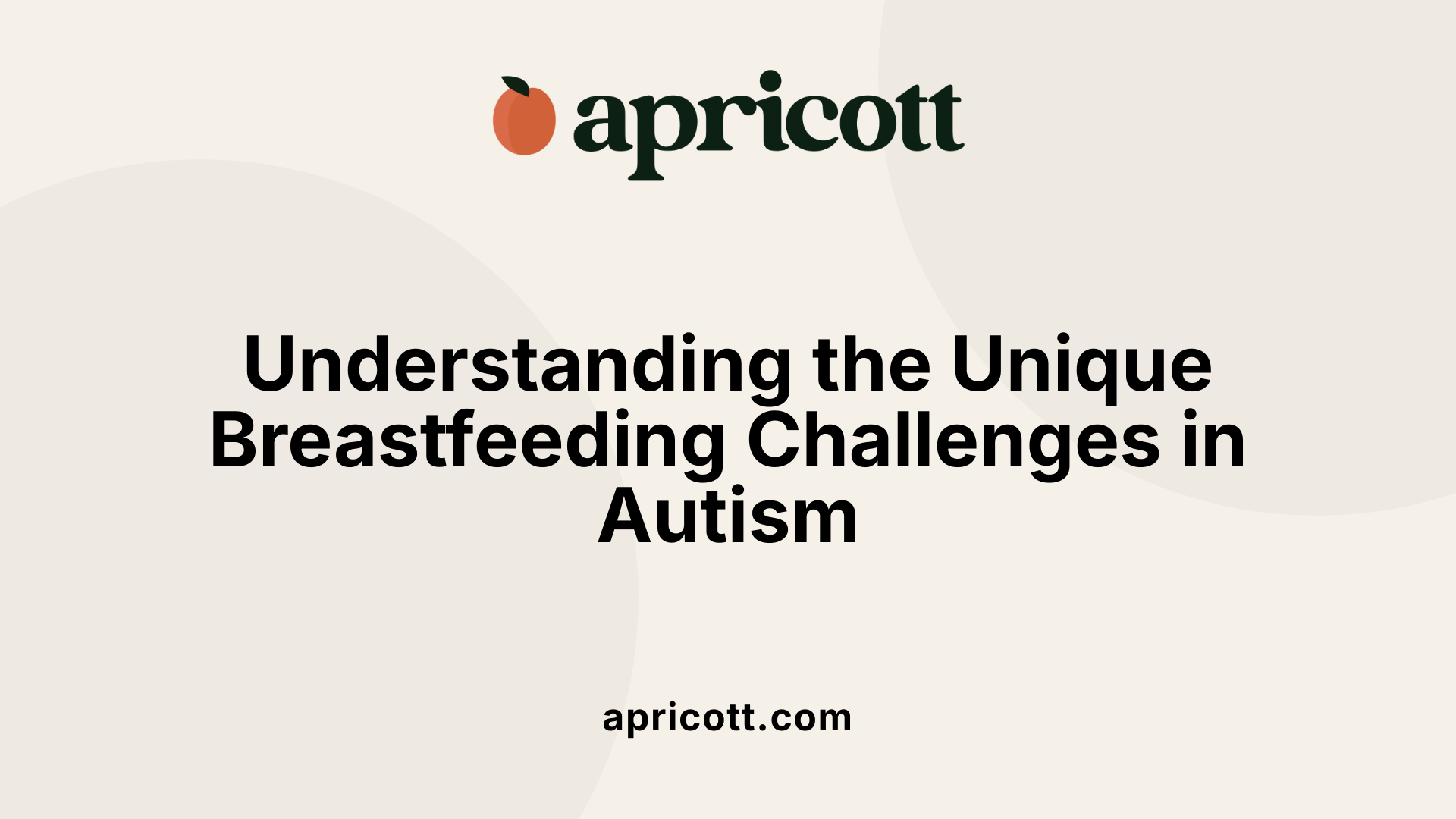
Research shows that children diagnosed with autism spectrum disorder (ASD) tend to breastfeed for shorter periods compared to their neurotypical (TD) peers. On average, the difference in breastfeeding duration can be about 1.5 to 2 months less in children with ASD. The rate of exclusive breastfeeding during the first year is notably lower among children with ASD—around 20-25%—versus about 30-37% in TD children.
Importantly, this difference persists even after considering various factors such as birth parameters and socio-demographic variables, indicating a possible link between shorter breastfeeding duration and ASD independently. Notably, children with ASD show delayed initiation of breastfeeding and lower prevalence of exclusive breastfeeding at 4 months, which may serve as early markers for later autism diagnosis.
Both autistic mothers and children encounter unique challenges related to breastfeeding. Mothers of children later diagnosed with ASD often report greater difficulties, including problems with latch, sensory sensitivities, and behavioral challenges during breastfeeding. These challenges are tied to sensory overload, pain, and trouble accessing tailored breastfeeding support.
For autistic children, sensory sensitivities—such as heightened responses to touch, sounds, or smells—can cause discomfort or aversion during feeding. Oral motor difficulties, including uncoordinated sucking and gagging, may complicate breastfeeding. As a result, feeding can be inconsistent, prolonged, or involve supplementation with formula.
Additionally, support systems may not always be equipped to meet their specific needs, making access to help more difficult. The emotional toll on parents can include feelings of guilt, frustration, and worry over feeding issues and the child's developmental trajectory.
Early feeding behaviors often offer clues to atypical development and may signal autism risk. Common early indicators include poor latch, uncoordinated or weak suck, and oral sensitivities that lead to choking or gagging. Some infants show lack of interest in feeding, avoidance of certain positions, or early resistance to solids, especially after 6 months.
Infants later diagnosed with ASD may display disrupted hunger and satiety cues, preferring specific stimuli or seeking sensory input through feeding. These behaviors often coincide with overall social communication challenges characteristic of ASD.
Recognizing these early signs allows for earlier intervention, which may improve feeding outcomes and support neurodevelopmental progress. Medical professionals and parents should observe feeding patterns such as irregular sucking, sensory sensitivities, or early cessation of breastfeeding, as these can serve as early markers of autism.
Creating effective support mechanisms is essential for facilitating breastfeeding in autistic mothers and children. Strategies include designing sensory-friendly environments—such as providing quiet, dimmed spaces—and employing clear, straightforward communication without overwhelming sensory stimuli.
Healthcare professionals should seek explicit consent before physical assistance, respecting boundaries and individual comfort levels. Training providers in autism awareness, sensory sensitivities, and communication differences improves responsiveness and reduces misunderstandings.
Support can also involve offering visual cues, written instructions, and flexible approaches like the use of nipple shields or alternative feeding methods when needed. Engaging autistic trainers and peer support groups enhances understanding and sharing of tailored techniques.
Personalized approaches, including managing sensory overload and responding adaptively to the child's cues, encourage successful breastfeeding. A consistent, patient, and respectful support system can greatly improve breastfeeding experiences and outcomes for autistic families.
| Aspect | Considerations | Support Strategies |
|---|---|---|
| Breastfeeding duration | Shorter in ASD, delayed initiation | Early lactation support, tailored guidance |
| Sensory sensitivities | Touch, sound, smell aversion | Quiet spaces, sensory accommodations |
| Feeding behaviors | Poor latch, aversions, self-regulation | Visual aids, flexible feeding options |
| Support needs | Access to knowledgeable providers | Autism-informed training, peer networks |
Understanding these differences and implementing appropriate support can help autistic mothers and children benefit from breastfeeding, fostering health and emotional bonding.
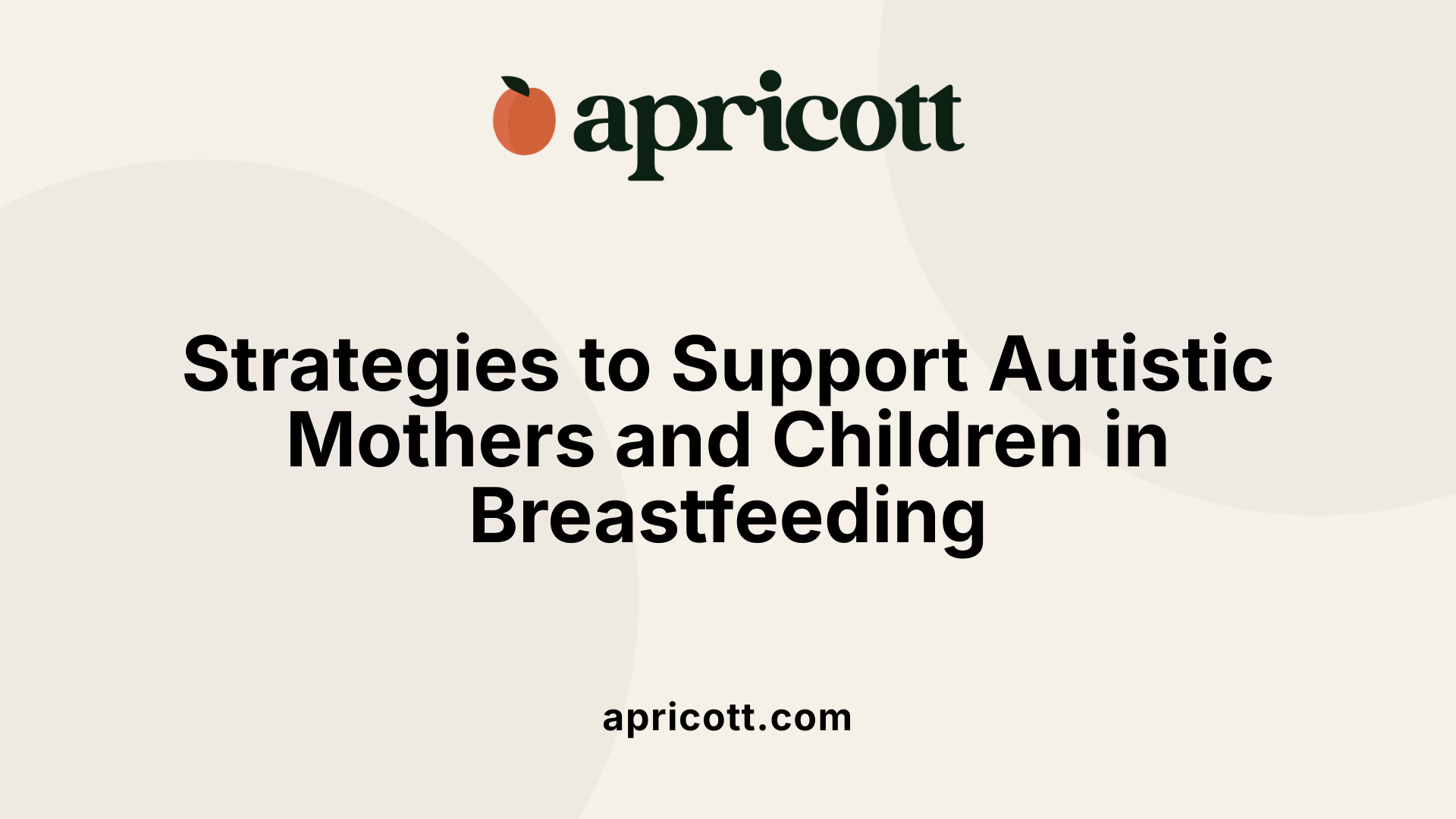
Supporting autistic mothers in breastfeeding involves understanding their unique sensory sensitivities. Sensory overload from bright lights, loud noises, or strong smells can make the breastfeeding experience challenging. To address this, healthcare providers and support persons can help create calming, sensory-friendly spaces. This includes dim lighting, quiet backgrounds, and minimizing intrusive sounds.
Adding soft textures and gentle visual cues can help make the environment more comfortable. For example, using calming colors and providing a dedicated, quiet corner ensures the mother feels secure and less overwhelmed. Such spaces not only facilitate easier breastfeeding but also promote emotional bonding.
Healthcare professionals play a vital role in supporting autistic mothers and children. Training programs should emphasize autism-specific challenges such as sensory sensitivities, communication differences, and behavioral cues.
Professionals need to understand that autistic women might have difficulties with physical touch, which can affect breastfeeding support and positioning. Clear, straightforward communication and respecting boundaries are crucial.
Training should also cover common feeding difficulties in autistic children, like oral motor challenges or sensory aversions. Providers should be prepared to recognize early indicators of feeding issues and offer tailored interventions.
Every autistic mother and child has individual needs. As such, support strategies must be adaptable and respectful of their boundaries. Distraction techniques, such as using toys or visual aids, can help reduce sensory overload during breastfeeding.
It's important to give mothers permission to explore alternative feeding options if traditional breastfeeding proves difficult. For instance, supplementing with formula or using bottle-feeding with adapted positions can reduce stress and prevent burnout.
Support approaches might include:
Professional guidance from lactation consultants familiar with autism can optimize feeding success. Also, ongoing peer support groups offer a platform for sharing experiences and coping strategies.
| Strategy | Description | Benefits |
|---|---|---|
| Sensory-friendly environments | Creating calm, quiet spaces with soft textures | Reduces overload, enhances comfort |
| Autism-specific training for providers | Educating on sensory, communication, and behavioral needs | Better support, early problem detection |
| Personalized feeding plans | Tailoring approaches to individual needs | Increased success and reduced stress |
| Distraction techniques | Using visual or tactile stimuli during feeds | Minimize sensory distress |
| Flexibility in feeding methods | Supporting alternative feeding if needed | Prevents burnout, encourages bonding |
Implementing these targeted strategies can significantly improve the breastfeeding experience for autistic mothers and children. Recognizing their unique needs fosters a supportive environment that promotes health, bonding, and neurodevelopmental benefits.
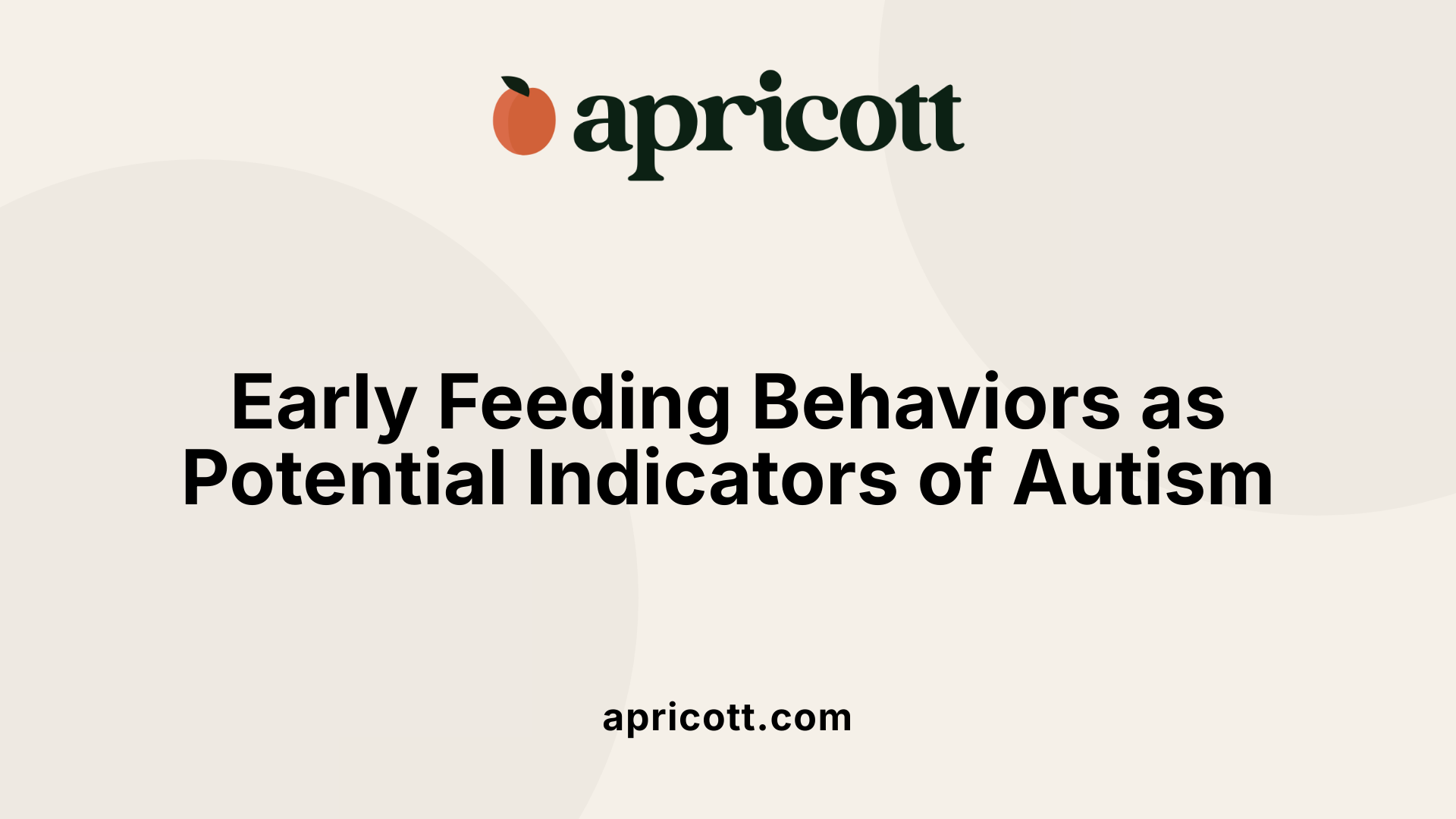
Many mothers, including those with autistic children, experience common breastfeeding challenges. These include sore or cracked nipples caused by improper positioning or latch issues. When the baby's mouth isn't attached correctly to the breast, feeding can be painful and inefficient. Concerns such as not enough breast milk often occur at the start but tend to resolve with proper support and guidance, with signs like an infant feeding well and appearing satisfied indicating sufficient intake.
Engorgement, where breasts become painfully full, can hinder feeding, while blocked milk ducts and mastitis lead to lumps, inflammation, and flu-like symptoms. These issues require prompt management to continue breastfeeding successfully.
Another concern is thrush, a fungal infection that can infect cracked nipples and the baby's oral cavity, causing nipple pain and oral discomfort in infants. Treatment involves antifungal medications and strict hygiene practices. Additionally, anatomical issues like tongue-tie can interfere with effective feeding but are treatable with medical intervention.
Support from healthcare professionals, lactation consultants, and trusted sources like the NHS can help mothers navigate these problems, ensuring both mother and child can maintain a positive breastfeeding experience.
Early signs during breastfeeding may serve as indicators of future autism risk. Mothers of infants who later develop ASD often report difficulties such as poor latch, uncoordinated sucking, and heightened oral sensitivities. These issues might manifest as the baby choking, gagging, or showing irregular sucking patterns.
Furthermore, some infants exhibit less interest in feeding, lose focus quickly, or show limited responses to hunger and satiety cues. Sensory sensitivities — such as tactile defensiveness or aversion to touch — can make breastfeeding challenging and might reflect early neurological differences associated with ASD.
Research has also observed that children with ASD tend to have shorter durations of breastfeeding and are less likely to be exclusively breastfed during the first year. Recognizing these early feeding behaviors and patterns can facilitate earlier screening and support, potentially improving developmental outcomes.
Understanding these early signs and challenges allows caregivers and health providers to implement targeted interventions, supporting healthier neurodevelopmental trajectories for at-risk children.
While breastfeeding has demonstrated significant protective effects against ASD and plays a critical role in early neurodevelopment, the relationship between feeding practices and autism risk is complex and influenced by multiple factors. For children with autism or those at risk, specialized support is essential to navigate unique sensory, behavioral, and physiological challenges. Enhancing support systems, training healthcare providers in autism-sensitive care, and fostering early detection of feeding-related markers can optimize outcomes. Ongoing research continues to deepen understanding of how breastfeeding influences neurodevelopment, reinforcing the importance of accessible, tailored support for autistic mothers and children. Ultimately, raising awareness and providing evidence-based guidance can help families achieve better health and developmental trajectories.